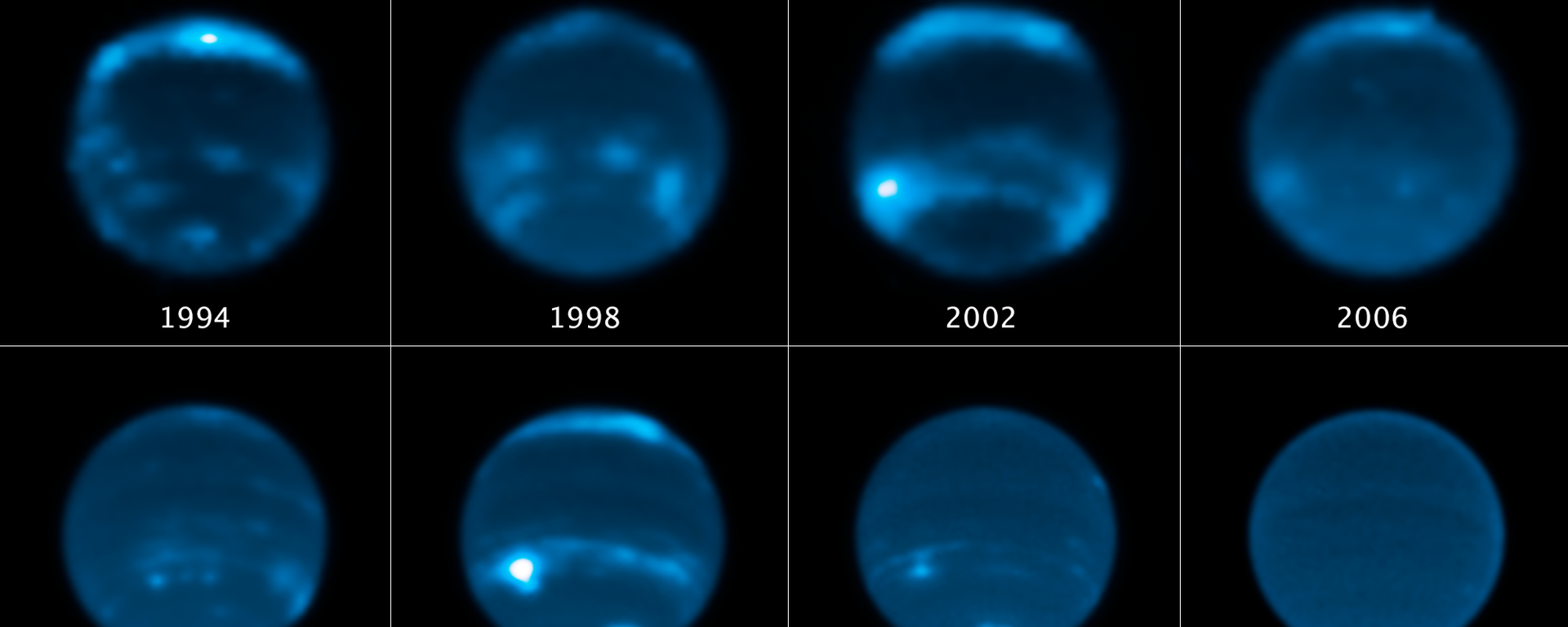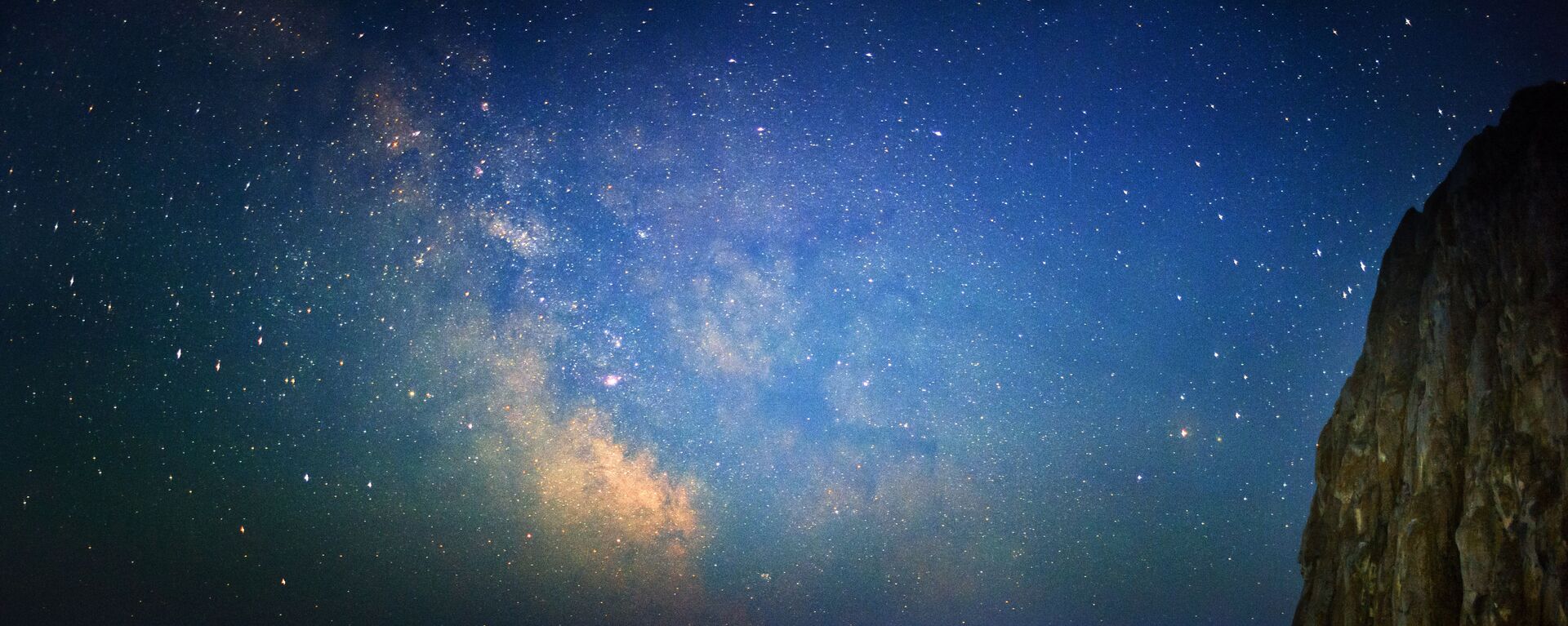https://sputnikglobe.com/20230913/gigantic-bubble-of-ancient-galaxies-to-challenge-universes-fundamental-laws-1113328240.html
Gigantic Bubble of Ancient Galaxies to Challenge Universe's Fundamental Laws
Gigantic Bubble of Ancient Galaxies to Challenge Universe's Fundamental Laws
Sputnik International
Astronomers stumbled upon a cosmic wonder – Ho'oleilana, a mind-boggling bubble brimming with galaxies stretching almost inconceivably to nearly 1 bln light-years across.
2023-09-13T03:34+0000
2023-09-13T03:34+0000
2023-09-13T03:32+0000
beyond politics
science & tech
space
space exploration
galaxies
galaxy
milky way
https://cdn1.img.sputnikglobe.com/img/07e6/08/17/1099888502_0:219:1000:782_1920x0_80_0_0_b51b2f75c18a959d05d9444a5e4fd417.jpg
The mammoth discovery is believed to be a baryon acoustic oscillation (BAO), an ancient relic from the infancy of the universe, dating back over 13 billion years. The BAOs are said to have formed a mere 380,000 years after the Big Bang, offering a captivating glimpse into the universe's earliest moments.Situated a mere 820 million light-years away from our Milky Way, Ho'oleilana comprises a spherical shell of galaxies housing a supercluster core, in alignment with theoretical predictions. What's more, it exhibits an extraordinary density of galaxies emanating from its epicenter and incorporates previously identified structures that rank among the most colossal known entities in the universe.BAOs, like Ho'oleilana, are birthed from density fluctuations in the nascent universe, creating pressure oscillations akin to sound waves within a seething plasma sea. As the universe cooled and became transparent to radiation roughly 380,000 years post-Big Bang, these celestial bubbles were miraculously preserved, eventually becoming densely-populated galaxies.The analysis of galaxy patterns within BAOs serves as a celestial Rosetta Stone, allowing astronomers to decipher the origins of colossal cosmic structures. The first inklings of Ho'oleilana were unearthed in 2016, though its true scale eluded researchers until now.Utilizing data from Cosmicflows-4, scientists mapped the cosmic leviathan in three dimensions, unraveling its complete spherical shell and the intricate tapestry of galaxy clustering within.The sheer enormity and proximity of Ho'oleilana pose a conundrum concerning the universe's expansion rate, boldly defying theoretical expectations. Current estimates rest within the range of a Hubble constant of 67-74 kilometers per second, per megaparsec.However, the discovery hints at a slightly speedier rate, oscillating between a tantalizing 74.7 and 76.9 kilometers per second per megaparsec.If validated, this result threatens to upend our established understanding of the universe's fundamental expansion.The findings of the study were published in The Astrophysical Journal.
https://sputnikglobe.com/20230818/neptunes-enigmatic-cloud-disappearance-traced-to-solar-cycle-defying-expectations-1112692865.html
https://sputnikglobe.com/20230806/greatest-eurasia-solar-telescope-construction-begins-in-russia-1112429061.html
Sputnik International
feedback@sputniknews.com
+74956456601
MIA „Rossiya Segodnya“
2023
News
en_EN
Sputnik International
feedback@sputniknews.com
+74956456601
MIA „Rossiya Segodnya“
Sputnik International
feedback@sputniknews.com
+74956456601
MIA „Rossiya Segodnya“
what is hooleilana, ancient galaxies, previous universe, what is baryon acoustic oscillation,
what is hooleilana, ancient galaxies, previous universe, what is baryon acoustic oscillation,
Gigantic Bubble of Ancient Galaxies to Challenge Universe's Fundamental Laws
Astronomers stumbled upon a cosmic wonder – Ho'oleilana, a mind-boggling bubble brimming with galaxies stretching almost inconceivably to nearly 1 bilion light-years across.
The mammoth discovery is believed to be a baryon acoustic oscillation (BAO), an ancient relic from the infancy of the universe, dating back over 13 billion years. The BAOs are said to have formed a mere 380,000 years after the Big Bang, offering a captivating glimpse into the universe's earliest moments.
Situated a mere 820 million light-years away from our Milky Way, Ho'oleilana comprises a spherical shell of galaxies housing a supercluster core, in alignment with theoretical predictions. What's more, it exhibits an extraordinary density of galaxies emanating from its epicenter and incorporates previously identified structures that rank among the most colossal known entities in the universe.

18 August 2023, 00:49 GMT
BAOs, like Ho'oleilana, are birthed from density fluctuations in the nascent universe, creating pressure oscillations akin to sound waves within a seething plasma sea. As the universe cooled and became transparent to radiation roughly 380,000 years post-Big Bang, these celestial bubbles were miraculously preserved, eventually becoming densely-populated galaxies.
The analysis of galaxy patterns within BAOs serves as a celestial Rosetta Stone, allowing astronomers to decipher the origins of colossal cosmic structures. The first inklings of Ho'oleilana were unearthed in 2016, though its true scale eluded researchers until now.
Utilizing data from Cosmicflows-4, scientists mapped the cosmic leviathan in three dimensions, unraveling its complete spherical shell and the intricate tapestry of galaxy clustering within.
The sheer enormity and proximity of Ho'oleilana pose a conundrum concerning the universe's expansion rate, boldly defying theoretical expectations. Current estimates rest within the range of a Hubble constant of 67-74 kilometers per second, per megaparsec.
However, the discovery hints at a slightly speedier rate, oscillating between a tantalizing 74.7 and 76.9 kilometers per second per megaparsec.
If validated, this result threatens to upend our established understanding of the universe's fundamental expansion.
The findings of the study were published in
The Astrophysical Journal.




